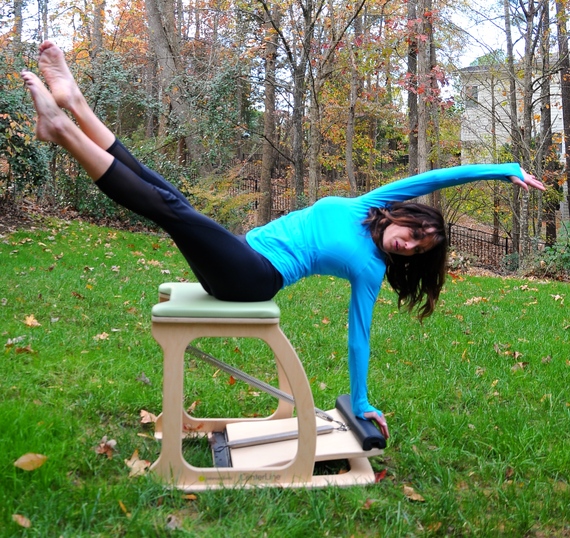Control. How do you define it? What does it look like in your life? We can often feel "out of control." Or, there are some that aim to be in "complete control" of others and their situation. "Control Freak" may often be a term used to define or describe a "Type A" individual who is not able to allow others to participate or interject ideas. These are all negative associations with the word control.
As we look at control in a more positive light, it may look like "having control" of your finances. Or "having control" over your eating habits. We all need to have some control or boundaries to live by or else life turns to pandemonium and mayhem. This control gives us the ability to have a better sense of where we are and who we are, which ultimately has a more positive emotional response.
"Through Contrology, you first purposefully acquire complete control of your own body and then through proper repetition of its exercises you gradually and progressively acquire that natural rhythm and coordination associate with all your subconscious activities." -- Joseph Pilates
In Pilates, Control is one of the key principles of the movement method. Similar to the statement about "lack of control or boundaries leading to mayhem," our bodies will respond the same if we do not find the inner control of our movements. This could read in the lack of proprioception -- not being aware of how or where your physical body is in space. Lack of control may also be expressed in the form of hyper-mobility -- when the limbs or joints are moving beyond their neutral or healthy position.
When we talk about control in Pilates, we are referring to the control of body, mind and center. As you take the time to work through the precise movements of the beginning Pilates exercises, you will find yourself gaining more control and better awareness of your movements. This awareness will help build the strength and control needed for the more advanced movements to follow (headstands, balance, and backbends) that will ultimately prepare and organize your movement in the real world.
As we start to look at the Pilates method and its core benefits, we must begin to practice each and every principle that applies to the method. There is not one principle to be discounted as they all weave together to create the true benefits. If we are out of control and out of touch with ourselves physically and emotionally, we will never be able to fully master the benefits of the movements. This disconnect can lead to poor body mechanics, misalignments and injury.
As I have mentioned before, Concentration is a principle that we must be able to master in order to grasp any other principle of the Pilates method. Once we achieve the ability to concentrate, we will then be able to relate to our Center. Relating and being aware of our center will lead us to being in better control of the mind/body functions we are talking about.
Before you begin to exercise your mind and body, take a moment to prepare. I am a huge fan of essential oils which help me work on calming the mind and finding mental focus before any workout or work task. Make sure you use the highest grade of therapeutic oils. My favorite combination of oils to diffuse are Geranium, Vetiver and Bergamot. They provide me hours of mental clarity to help find the self control needed during the work. Other oils I use are Lemon, Grapefruit or Peppermint with a couple of drops in my drinking water or diffused for aroma. They are not only cleansing, but they give a sense of alertness.
Once I am better focused, I then give full attention to my mind and body as they prepare to perform together. This is when I visualize the work ahead and how I wish to see it look. Visualization is a very useful tool, though it can take some practice. When you can create an image of what the ideal body movement looks like, you just may find you get very close to it.
"Using imagery is not very effective without personal desire and intention, and even with clear intention, imagery is a subtle process that requires patience. However, if used systematically, imagery can work long-term miracles, attacking the roots of your alignment problems ... If we practice visualization techniques and use imagery, our brains get better at doing that. Conversely, if our minds regularly wander off into a jumble of random thought, they get better at that." -- Eric Franklin, Dynamic Alignment Through Imagery
So, in your preparation for the new year, take the time and effort toward gaining control. You will find that your mind and body will respond most favorably. How do you see YOU in 2016. Let's work together to find control.
Take the 100s to Happiness® Challenge today!
Also, Come join us for the 100s to Happiness® Retreats. You will walk away with a better sense of YOU and how you move. Click Here for more information.
To learn more about more about essential oils, email me here.
